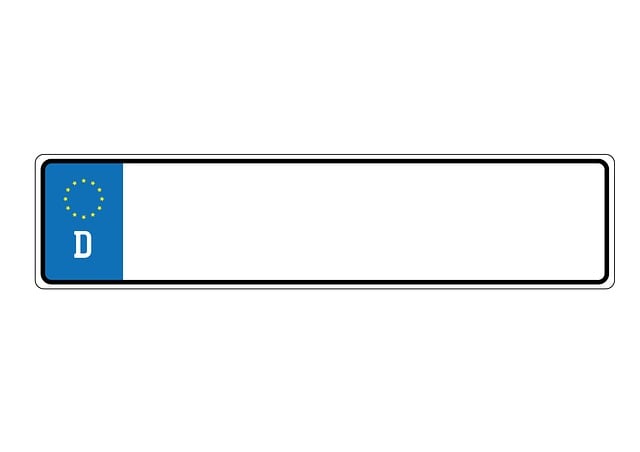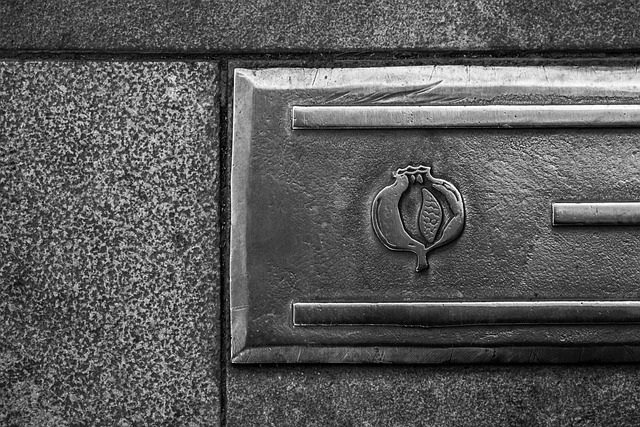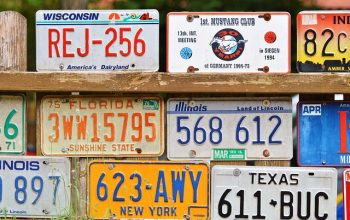Over time, license plates can become damaged or illegible, requiring a replacement. If you’ve lost or need to replace damaged plates, understand the simple process at your local DMV office or online. This guide details everything from gathering required documents and forms to navigating the step-by-step DMV replacement process, including costs and tips for effective plate maintenance. Learn how to efficiently order new license plates, whether it’s due to a lost or stolen plate, ensuring compliance with traffic laws.
- Understanding When to Replace License Plates
- Gather Required Documents and Forms
- The DMV Replacement Process Step-by-Step
- Costs Associated with Obtaining New License Plates
- Tips for Effective Plate Maintenance
Understanding When to Replace License Plates

If your license plate becomes damaged beyond repair or its characters become illegible, it’s time to consider a replacement. While some minor wear and tear is expected over time, significant damage can impede the identification of your vehicle, making it a legal requirement to replace the plates. In addition to physical damage, if your plate is lost or stolen, you should immediately initiate the process of obtaining a new one through your local DMV.
The decision to replace license plates isn’t always straightforward, so being aware of the signs that indicate a need for new ones is key. Cracks, deep scratches, and peeling paint are all indications that your plate may no longer be legible or safe to use. Moreover, if the characters on your plate have faded to the point where they’re difficult to read, it’s time to order new license plates through the DMV, ensuring compliance with traffic laws and maintaining clear vehicle identification.
Gather Required Documents and Forms

When replacing a lost or damaged license plate, gathering the necessary documents and forms is the first step in the process. You’ll need to visit your local Department of Motor Vehicles (DMV) office or their online platform to access the required paperwork. Among these documents, you’ll typically require proof of vehicle ownership, such as a registration document, and personal identification like a valid driver’s license or state-issued ID card.
Additionally, ensure that you have filled out all necessary forms accurately, including any details related to your specific situation, such as reporting the loss or theft of the original plates. It’s also crucial to be aware of the replacement fees associated with this process, which can vary depending on your location and the reason for the plate replacement (lost, stolen, or damaged).
The DMV Replacement Process Step-by-Step

DMV License Plate Replacement Process:
1. Visit Your Local DMV Office or Website: Start by heading to your state’s Department of Motor Vehicles (DMV) office in person or explore their online services for dedicated forms related to lost or damaged license plate replacements. Many DMVs now offer this service through their websites, making it convenient and time-saving.
2. Gather Required Documents: You’ll need to provide proof of vehicle ownership and identification. This typically includes items like a valid driver’s license, vehicle registration documents, and possibly insurance cards. Make sure these are up to date and readily available before you begin the process.
3. Complete the Application Forms: Fill out the provided forms accurately and completely. These will require details about your vehicle, including its make, model, and year, as well as personal information for verification purposes. Double-check all entries for errors to ensure a smooth process.
4. Submit and Pay Fees: Submit the completed forms along with any required fees. License plate replacement fees vary by location, so check with your local DMV for specific amounts. Payment methods accepted might include cash, credit cards, or checks (as allowed).
5. Receive New License Plates: Once processed, which typically takes a few days, you’ll receive your new license plates. They will be issued with unique identifiers to ensure they remain legible and secure, aiding in vehicle identification and compliance with traffic regulations.
Costs Associated with Obtaining New License Plates

When it comes to replacing a lost or damaged license plate, understanding the associated costs is crucial before embarking on the DMV process. The fee for obtaining new plates varies across jurisdictions but typically includes a base charge for the replacement itself, along with potential additional fees for various services like expedited processing or specific plate types. For instance, in some regions, you might pay around $20-$30 for standard replacement plates, while specialty or personalized plates could incur extra charges, ranging from $50 to even hundreds of dollars.
If your license plate is simply missing but not damaged, the process may be simpler and cheaper. Many DMVs offer online services where you can order a new plate without visiting the office. These orders usually come with standard replacement fees, while some states might waive these costs if it’s deemed a genuine ‘lost’ situation rather than negligence. However, always check with your local DMV to understand the specific Lost Plate DMV Process and associated License Plate Replacement Fees before initiating any action.
Tips for Effective Plate Maintenance

Maintaining clear license plates is crucial for both vehicle identification and legal compliance on the road. To ensure effective plate maintenance, start by regularly inspecting your plates for any signs of damage, wear, or discoloration. Addressing issues early can prevent further deterioration. If a plate becomes illegible due to rust, scratches, or other damage, it’s time to consider replacement.
When faced with a lost or stolen license plate, promptly initiate the lost plate DMV process. This typically involves visiting your local DMV office or accessing their website to obtain the necessary forms for a lost license plate replacement. Have your vehicle registration and identification documents ready to streamline the process. While waiting for new plates, ensure your vehicle remains identifiable by using temporary plates provided by the DMV or covering damaged areas with reflective tape to enhance visibility. Remember that timely action is key; don’t delay in ordering new license plates to avoid potential fines and legal issues.
In conclusion, promptly addressing damaged or illegible license plates is crucial for both vehicle identification and adherence to traffic laws. By understanding when to replace them, gathering the necessary documents, following the DMV replacement process, being aware of associated costs, and implementing effective maintenance tips, you can ensure your plates remain clear and legible. Remember that a well-maintained license plate not only helps authorities identify your vehicle but also contributes to a safer driving experience for everyone on the road.



